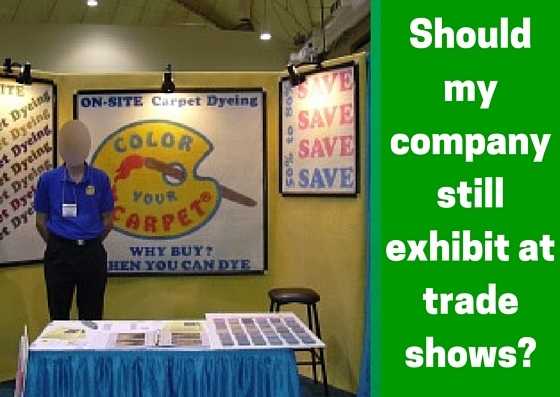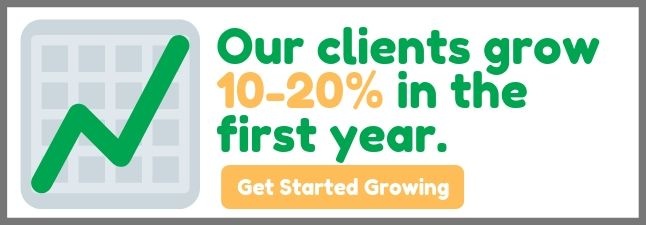Posted by Todd Hockenberry ● Nov 06, 2015
Should My Company Still Exhibit at Trade Shows?
This is one of the more common questions I get from business owners. The concern stems from the inability to know whether the show was a good investment. Business owners know that trade shows are expensive, take a lot of time, and have opportunity costs but they also feel like they have to do them and they struggle with defining an ROI of the investment.
 So should you do trade shows? My answer to this question is, "Yes, as long as the show attracts target personas and you have a plan in place to follow up with leads and measure the ROI of the show."
So should you do trade shows? My answer to this question is, "Yes, as long as the show attracts target personas and you have a plan in place to follow up with leads and measure the ROI of the show."
Planning is Key
The most important thing to do once you decide to exhibit at the show is to plan for what you are going to do with the leads before you go. When you come back you will be buried with piled up work (hence the opportunity costs) so having a plan in place is key. Your plan should include follow up emails, deciding who is making calls, plans for what reps and distributors have to do. Most importantly, make sure you plan to follow up with all show leads!
Amazingly studies by Lynch Exhibits and others show that, "less than 70 percent have a plan or process in place for how leads are followed up after a show. Only 47 percent of companies track leads generated at trade shows and events throughout the sales cycle, and only 28 percent measure and report the number of leads that ultimately convert to sales as part of their exhibit programs' ROI."
No wonder we get this question so often.
Pre-Show Prep
Key pre-show steps include:
Promote your exhibit and what makes it interesting - Email your database the details and not just 'stop by our booth'. If you are doing demos, handing out samples, or have a booth special make sure to let your contacts know.
Set appointments with key customers and prospects - Do not leave it to chance that they will walk by, set a schedule to meet before the show starts.
Get in the trade publications for that show - Reach out to the editor of the trade publication and use your content (one of the best uses of great content) to convince them to run articles or other placements (for free) in the magazine or e-newsletter.
Optimize your profiles - Take advantage of all of the free promotion trade shows offer and make sure your trade show site profile is as complete as possible. Uploading your logo (if possible) and entering your contact info is the bare minimum.
Promote on you web site and social media - Use the show as a reason to talk to your persona across your internet presence. Write about the ways you help your target persona and let them know what is new, special, or different that you'll be sharing at the show.
Plan demos/ training- Set up times with your sales channel ahead of time to do demos or training on new equipment or processes.
Prepare great content to give away - Give visitors to your booth what they want from their perspective: case studies not catalogs, how to guides instead of specification sheets, application stories with your business cards
Come up with a great offer that only booth visitors can get - Write up a new white paper, ROI calculator, cost savings tools. Your offer should be something that helps them, gives you a value added reason to follow up, and serves as a reason for them to be looking for your follow up.
The Goal
Your goal, of course, is to engage prospects and come away with an opportunity to continue the conversation. Hopefully you'll be able to guide them to the right solution and to a sale. But guess what? That is every other exhibitors goal. All of your competitors are playing this same game, so we advise our clients to play a different one.
We advise that your pre-show planning needs to center around the goals of your prospects, and making sure that they leave the booth feeling like you HELPED THEM, not sold them.
Remember Stat #2 from our Hitting Your Top Line Growth Targets post
74% of buyers choose the company that is first to add value as they are defining their buying vision
Many trade show visitors are at the early stages of the buying process or are not actual buyers but influencers. They will remember the company that was helpful, not the one that insulted them with worthless toys and other over-branded SWAG (I am a known SWAG lover, it has NEVER swayed me towards a purchase).
For those prospects that are farther along in the buying process prepare helpful bottom of the sales funnel content like price comparisons, long term ROI calculations of savings or avoided problems, a guide or checklist to purchasing your equipment type with the key attributes to consider, and great case studies and testimonials.
All of this must be considered before you leave for the show.
Success at trade shows comes from planning the right things, focusing on the right people at the show, and then following up in a meaningful way. Invest more time in creating an experience that leaves prospects impressed with how much you helped them and you are on your way to making trade shows a great investment.
Topics: Marketing, Manufacturing, Tradeshows





